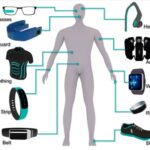A set of five connectors that connect board-to-board, board-to-backplane, and board-to-cable connections address signal-integrity issues not present at lower data rates.
Every time digital data streams make a speed jump, new problems in physics emerge that did not exist at lower speeds. Now that 224 Gb/sec PAM4 links are in development, engineers must deal with the new realities of signal integrity that arise from interconnects.
Because of the signal frequencies and wavelengths involved, there’s a movement afoot to shorten the distances that signals must travel due to losses in copper channels, particularly in PCB traces. There’s also a need to pack more devices into the card slots in chassis used for switching at data centers and telecom networks. To address these issues, Molex engineers have developed a family of 224 Gb/sec connectors and cables, as shown in Figure 1.

The family consists of five sets of connectors. The Mirror Mezz Enhanced 224G board-to-board connector lets boards containing ASICs, GPUs, and CPUs connect with each other with a minimum of board space and minimum space between boards (of 5 mm to 8 mm). This lets more boards fit into a card slot and minimizes the signal path between boards. The connectors themselves are surface-mount using ball-grid arrays (BGAs).
The Inception genderless connectors mate without the need for socket/receptacle pairs. One type will fit both sides. Molex has designed a version with SMT mounting for connecting boards to backplanes and another for connecting to cables to jump over PCB traces. The SMT eliminates PCB drilling and vias on boards. The cable version has several wire gauge options, such as the 24 and 29-gauge. Figure 2 shows how two boards connect over a cabled backplane.

The CX2 Dual Speed 224G Near-ASIC Connector-to-Cable flavor lets you connect cables close to an ASIC. A screw mount takes the strain off the connections to increase reliability. From there, signals can travel across a board or to pluggable modules. Figure 3 shows pluggable modules connecting to CX2 connectors close to an ASIC.

Many applications call for industry-standard connectors that conform to multi-source agreements (MSAs). To address those applications, the product family includes octal small form-factor pluggable (OSFP 1600) and quad small form-factor pluggable (QSFP 800 QSFP-DD 1600) options. These flavors feature board-mountable cages and connectors that accept cables.
What’s different at 224 Gb/sec, anyway?
Molex director of interconnect technology, Gus Panella, explained that at 224 Gb/sec, the symbol rate is 56 G where each symbol in PAM4 represents two bits and data is clocked on both rising and falling edges, which brings the bit rate to 224 Gb/sec. That puts ¼ wavelength at 0.7 mm. At such a small wavelength, resonance can occur in these cavities. “We had to solve the signal-integrity problems that occur because of the physics of resonant cavities,” said Panella. “Any space between two conductive bodies or a hole in a conductive body can lead to resonance. We had to contend with mold flow to get the right spacing, something that was not such a significant issue at the wavelengths in 112 Gb/sec and lower data rates.”
Molex expects samples of Mirror Mezz Enhanced, Inception, and CX2 Dual Speed connectors to be available in summer 2023. Product samples of OSFP and QSFP offerings should occur in the fall of 2023.






Leave a Reply
You must be logged in to post a comment.